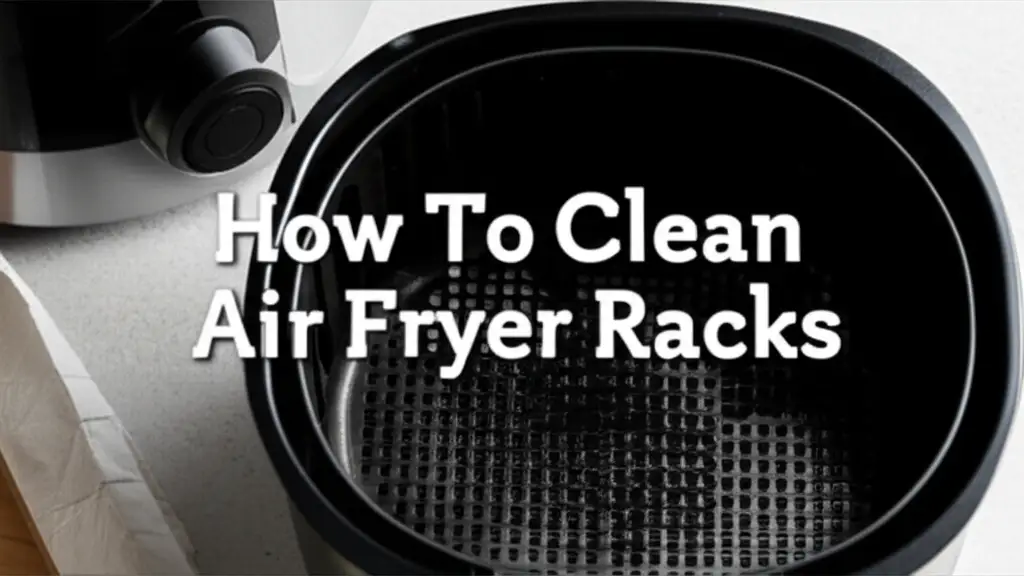· Kitchen Cleaning · 13 min read
How To Clean Coffee Pot

Mastering the Art of How to Clean Your Coffee Pot
Do you love your morning coffee ritual? A clean coffee pot makes all the difference. Old coffee residue and mineral deposits can ruin the taste of your favorite brew. Knowing how to clean coffee pot components ensures fresh, delicious coffee every time.
Ignoring coffee pot cleanliness affects flavor. It also impacts your machine’s life. This guide helps you keep your coffee pot spotless. We cover daily cleaning, deep cleaning, and stain removal. You will learn easy steps for a better coffee experience.
Takeaway:
- Clean your coffee pot daily for best results.
- Use vinegar or baking soda for deep cleaning and descaling.
- Address stubborn stains and mold promptly.
- Proper cleaning extends your coffee pot’s lifespan.
To clean a coffee pot, use a mixture of equal parts white vinegar and water to descale the machine, running it through a brew cycle. For the carafe, scrub with warm soapy water or a baking soda paste to remove stains. Rinse all parts thoroughly to eliminate odors and residue.
Why a Clean Coffee Pot Makes All the Difference
A clean coffee pot does more than look good. It improves your coffee’s taste. Residue from old coffee builds up over time. This residue turns bitter. It makes new coffee taste stale. You want your coffee to taste fresh. A clean pot ensures this.
Think about the health aspect too. Wet, dark environments like coffee makers are perfect for mold. Mold can grow inside your coffee machine. This mold is not visible. It can affect your health. Regular cleaning prevents mold growth. It keeps your coffee safe to drink.
Cleaning also protects your coffee maker. Mineral deposits from water build up in the internal parts. This buildup reduces the machine’s efficiency. It can cause clogs. It can lead to expensive repairs. Cleaning removes these deposits. It extends the life of your appliance. A clean pot works better. It lasts longer.
Flavor and Freshness
Coffee grounds leave oils behind. These oils become stale. Stale oils make your fresh coffee taste bad. Mineral deposits from hard water also build up. They create a film inside pipes. This film changes coffee flavor. Cleaning removes these layers. It lets the true flavor of your coffee beans shine.
Health and Hygiene
Your coffee maker uses water and heat. This combination creates a perfect home for germs. Mold spores can grow in the water reservoir. Bacteria can build up in the carafe. These hidden growths are unsanitary. They can make you sick. Regular cleaning flushes them out. This makes your coffee pot hygienic.
Extending Lifespan
Hard water deposits are like rust for your coffee maker. They clog the heating elements. They block water flow. This forces your machine to work harder. It wears down parts faster. Cleaning removes these deposits. It keeps water flowing freely. This helps your coffee maker run smoothly for many years. You save money on replacements.
Daily Habits for a Spotless Coffee Pot
Daily cleaning prevents major buildup. It saves you time in the long run. Small steps each day make a big difference. This routine keeps your coffee tasting great. It ensures your machine stays in good shape. I always do a quick rinse after my morning cup.
After Each Use
You should empty your coffee pot right after brewing. Discard used coffee grounds. Rinse the filter basket under warm water. Wash the carafe with warm, soapy water. Use a soft sponge. This removes coffee oils before they dry. Drying coffee oils are harder to clean.
Rinse the carafe thoroughly. Make sure no soap residue remains. You can let the carafe air dry upside down. This prevents water spots. It also helps with ventilation. A dry environment discourages mold.
Weekly Wipe-Down
Once a week, give your coffee maker a quick wipe. Use a damp cloth to clean the exterior. Wipe down the warming plate. Spilled coffee can burn onto this surface. Burnt spills are difficult to remove later. Cleaning a coffee grinder is another weekly task. It helps keep your coffee fresh. Do not forget to wipe the power cord and plug too.
Inspect the water reservoir for any slime or buildup. Wipe it out if needed. You can use a paper towel. This keeps the water clean. It also helps your machine last longer. These small steps ensure a clean brew every day. If you use a separate container to keep your coffee warm, cleaning a coffee thermos is also important.
Deep Cleaning Your Coffee Pot with Vinegar
Vinegar is a natural cleaning powerhouse. It dissolves mineral deposits. It neutralizes odors. This method is safe and effective for coffee pots. I use white vinegar for this job. It works wonders.
The Descaling Process
You will need white vinegar and water. Mix equal parts vinegar and water. Fill your coffee maker’s water reservoir with this solution. Place a paper filter in the basket. Turn on your coffee maker. Let it brew half of the solution. Turn off the machine. Let it sit for at least 30 minutes. This allows the vinegar to work on stubborn deposits. The longer it sits, the better.
After 30 minutes, turn the coffee maker back on. Let it finish brewing the rest of the solution. Discard the vinegar solution. Now, run two full cycles of plain water through the machine. This rinses out the vinegar. It removes any lingering smell. A thorough rinse is very important. This method works well for various types. You can use it for cleaning a drip coffee maker or a Bunn coffee pot. It also works for Cuisinart coffee makers and Ninja coffee makers.
Cleaning the Carafe
Vinegar is also great for cleaning the coffee pot carafe. Pour equal parts vinegar and water into the glass carafe. Let it sit for several hours or overnight. The vinegar will break down coffee stains. It will loosen residue. For stubborn stains, add some uncooked rice to the solution. The rice acts as a gentle abrasive. Swirl the mixture around. The rice helps scrub the glass.
Empty the carafe. Wash it with warm soapy water. Rinse it well. Your carafe will look sparkling clean. This method removes tough stains. It makes your pot look new.
Baking Soda: Your Coffee Pot’s Gentle Cleaner
Baking soda is another natural cleaning agent. It is mildly abrasive. It absorbs odors. It is a good alternative if you do not like the smell of vinegar. I find it very effective for scrubbing.
Descaling with Baking Soda
You can use baking soda for descaling. Mix one-quarter cup of baking soda with one cup of warm water. Stir until the baking soda dissolves. Pour this solution into the coffee pot’s water reservoir. Let it sit for 30 minutes. Then, run a brew cycle. Once the cycle finishes, discard the solution. Run two full cycles of plain water through the machine. This rinses away the baking soda. It ensures no residue remains. This method helps maintain your coffee maker. You can learn more about this by reading how to clean coffee maker with baking soda.
Erasing Stubborn Coffee Stains
Baking soda is excellent for removing stubborn coffee stains. Make a paste with baking soda and a small amount of water. Apply this paste to stained areas inside the carafe. Let it sit for 10-15 minutes. Use a soft sponge or cloth to scrub the stains gently. The mild abrasiveness of baking soda helps lift the grime.
Rinse the carafe thoroughly with warm water. The stains should disappear. This works well for glass carafes. It also helps with the plastic components. It can even help with cleaning stained coffee mugs. Baking soda is safe and effective. It leaves no harsh chemical residue.
Tackling Mold and Tough Residue in Your Coffee Pot
Sometimes, simple cleaning is not enough. Mold can appear in neglected coffee makers. Burnt-on residue can stick to warming plates. These require stronger methods. It is important to address them quickly. Neglecting these issues can cause bad taste or machine damage.
Addressing Mold Growth
Mold can grow in damp, dark places. Your coffee maker’s water reservoir is one such place. If you see black spots or a slimy film, it is likely mold. Addressing mold requires immediate action. For light mold, the vinegar descaling method often works. For severe mold, a bleach solution might be necessary.
Mix one tablespoon of bleach with one gallon of water. Pour this solution into the water reservoir. Run it through a full brew cycle. Do not let the solution sit. Immediately follow with several cycles of plain water. Run at least three full cycles. Ensure no bleach smell remains. This step is critical for safety. Cleaning mold out of a coffee maker ensures hygienic brewing.
Removing Burnt-On Stains
Coffee spills often land on the warming plate. These spills can burn and become hard to remove. A baking soda paste can help here. Mix baking soda with a little water to form a thick paste. Apply the paste to the burnt area. Let it sit for 15-20 minutes. The paste will help loosen the residue.
Use a non-abrasive scrubber or a plastic scraper. Gently scrape away the burnt bits. Avoid metal scrubbers. They can scratch the warming plate. For very stubborn stains, a specialized cleaner for burnt-on food might be needed. Always wipe down the plate after each use to prevent buildup. This proactive approach saves much effort.
Specific Cleaning Tips for Different Coffee Pot Types
Coffee pots come in various designs. While the general principles apply, some types have unique needs. Understanding these helps you clean more effectively. Each pot design presents specific areas for focus.
Drip Coffee Maker Carafe and Reservoir
Drip coffee makers are common. The carafe and water reservoir need regular attention. For the carafe, use the vinegar soak or baking soda paste method. The reservoir can accumulate mineral deposits. Use the vinegar descaling process regularly for this part. Make sure to clean the filter basket every day. It gets oily quickly. The heating element is inside the machine. Descaling cleans it. This ensures efficient brewing.
French Press Cleaning
A French press has multiple parts. It includes a glass carafe, plunger, and mesh filter. Disassemble all parts after each use. Rinse the carafe, plunger, and mesh under warm water. Use dish soap and a sponge for a deeper clean. Pay special attention to the mesh filter. Coffee grounds can get stuck in it. A small brush can help dislodge grounds. Ensure all parts are dry before reassembling. This prevents rust on metal parts. It keeps the plunger working smoothly.
Percolator Cleaning
Percolators have a unique internal design. They feature a central tube and a basket. After each use, discard grounds and rinse all components. For deep cleaning, place the percolator parts in the main pot. Fill the pot with water. Add a few tablespoons of white vinegar. Bring the mixture to a boil on the stove. Let it simmer for 15-20 minutes. This helps loosen mineral deposits and coffee oils.
After boiling, let the water cool. Empty the pot. Scrub all parts with warm, soapy water. Use a bottle brush for the central tube. Rinse thoroughly. This method cleans the hidden parts effectively. It keeps your percolator brewing clear coffee.
Maintaining Your Coffee Pot: Frequency and Common Mistakes
Understanding how often to clean is crucial. Avoiding certain actions helps preserve your machine. Proper maintenance ensures optimal performance. It prevents common issues. I follow a simple schedule.
Optimal Cleaning Schedule
- Daily: Rinse the carafe and filter basket with warm soapy water after each use. Wipe down the exterior.
- Weekly: Give your coffee maker a more thorough wipe-down. Check for spills or residue on the warming plate.
- Monthly: Perform a deep descaling using vinegar or baking soda. This removes mineral buildup inside the machine. If you live in an area with very hard water, you might need to descale every two to three weeks. If you use your machine heavily, consider more frequent descaling. This schedule keeps your coffee pot in prime condition. It prevents major problems.
Mistakes to Avoid
- Using Abrasive Scrubbers: Never use steel wool or harsh abrasive scrubbers on glass carafes or plastic parts. They can scratch surfaces. Scratches create places for bacteria to hide. They also make new stains stick more easily. Stick to soft sponges or cloths.
- Putting Soap in the Reservoir: Do not put dish soap directly into the water reservoir. Soap residue can remain in the machine. This can affect the taste of your coffee. It is hard to rinse out completely. Only use water and a descaling solution (vinegar or baking soda) in the reservoir.
- Not Rinsing Enough: After deep cleaning, always run multiple cycles of plain water. This flushes out any cleaning solution. Leftover vinegar or baking soda can leave an unpleasant taste. It can also harm your machine over time. Rinse until no odor or taste of the cleaner remains.
- Ignoring Mold/Slime: Do not ignore visible mold or slimy buildup. These are health hazards. Address them immediately with appropriate cleaning solutions. As mentioned, bleach solutions are for severe mold only, with extreme caution.
- Leaving Stale Coffee: Do not let stale coffee sit in the carafe for long periods. It stains the glass. It promotes bacterial growth. Empty and rinse the carafe after each brewing session.
Frequently Asked Questions
How often should I clean my coffee pot?
You should rinse the carafe and filter basket daily. Perform a deeper descaling clean with vinegar or baking soda monthly. If you have hard water, consider descaling every two to three weeks. Regular cleaning prevents mineral buildup and maintains coffee flavor.
Can I use dish soap to clean my coffee pot?
You can use dish soap to clean the carafe, filter basket, and other removable parts. Do not put dish soap directly into the water reservoir. Soap residue can be difficult to rinse out completely. It can also leave an unpleasant taste in your coffee.
Why does my coffee taste bad after cleaning?
Your coffee might taste bad after cleaning if cleaning solution residue remains. Always run two to three full cycles of plain water through the coffee maker after using vinegar or baking soda. This flushes out any lingering cleaner. Ensure you rinse all parts thoroughly.
Is bleach safe for cleaning a coffee pot?
Bleach can clean severe mold, but use it with extreme caution. Mix one tablespoon of bleach with a gallon of water. Run through one cycle, then rinse with several cycles of plain water immediately. Do not mix bleach with vinegar. This creates dangerous fumes.
How do I remove coffee stains from the glass carafe?
For coffee stains on a glass carafe, create a paste with baking soda and water. Apply it to the stains and let it sit. Scrub gently with a soft sponge. Alternatively, fill the carafe with equal parts white vinegar and water. Let it soak overnight.
What causes mold in coffee makers?
Mold grows in damp, dark environments. Coffee makers, especially the water reservoir and internal tubing, provide ideal conditions. Leaving water in the reservoir or not allowing the machine to dry fully between uses encourages mold growth. Regular cleaning and drying prevent this.
Brew Better with a Clean Coffee Pot
Maintaining a clean coffee pot is easy. It makes a big difference. You get better-tasting coffee. Your machine lasts longer. You ensure hygienic brewing. Following these simple steps will help you enjoy every cup. From daily rinses to monthly deep cleans, you now know how to clean coffee pot effectively. Make these habits part of your routine. Elevate your coffee experience starting today. Enjoy your fresh, clean brew!
- coffee pot cleaning
- descaling coffee pot
- remove coffee stains
- coffee maker maintenance
- kitchen cleaning tips




